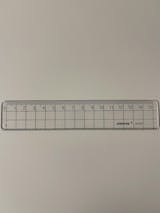Table of Contents
- What is included in the journal?
In the previous blog, I talk about the story and the Intention of bullet journal. If you don’t have an idea of what journaling is, you can read this first. In this article, before discussing the main components of the bullet journal, let talk about the term we usually used by the bullet journal community😊.
Terminology
If you are new to the world of bullet journaling, you might be confused by the terms like bujo, spread, and collection, etc. usually used by your friend or on the online community. Today I will try my best to discuss all of them and this terminology list will continue to grow and updated! If there is something that is not included in the below list, please ask at the comment session on this page and I will update this list😉. So, the first one first!
Bujo
It is not a negative word you can find in the dictionary😅. You might have guessed, yes, it is just an abbreviation of the phrase “Bullet Journal”, an organizational system you are learning. It is widely used by the in the hashtag like #bujoIdea, #bujoCover, etc.
Cover / Cover Page
Bullet journal cover page is not a hard or soft cover page like a normal book. Journalers do not usually make their book cover unless you DIY whole bullet journal notebook. The cover page could be the first page of the bullet journal notebook if your journal book starts at the beginning of the year. Journalers usually reserved a cover page for the monthly log which is the first page of every month in their log.
In this cover, you are free to design a theme for the current month. It could be anything you like or just follow the conventional color🎨 or design a different one for every month. For example, green🌿 theme is used for March. If you have some extra space, you could write a quote or draw a calendar if it is your monthly cover or simply writing a word of the current month in calligraphy.

@art_n_foxes

@amandarachlee
On the example above, a tiny calendar is added🙂.
Index
It is pretty much like a book index for you to locate the page by page number. It is an essential element of bullet journal especially when the number of the page increases day after day. The index allows you to quickly jump between sessions (like an anchor or bookmark of a web page but you do it by hand🤣). If you think you are going to do journaling regularly, it is recommended to reserve 2 or more bank pages for indexing😀.

@saricastudio

@jihielephant
Key🗝
Bullet journal key is a list of symbols🔣 or color🎨 code written down on a single page with the decode🔐 explanation of the secret keys🔑 you use on journaling. It is a quick reference guide used when you created many keys you still are not familiar with how to use them; it is for you to check it up. There are some common and basic symbols used by journalers like this:
You can still customize or create a new one that means something for you, or you feel more sense to you.

@lennydoesthings

@whitepapersucks
Before I talk about the meaning of some common keys, here are the reasons and benefits to using the bujo key:
- Time saving⌛ and more efficient
- Make your journal neat, clean🧹 and compact🗜
- Draw attention⚠ to important text or session
- For your quick search indexing🔍
- Make your bujo more personalized😎
These are some common rapid logging bullet journal keys🗝 you may like to use on everywhere like a task, event, or note:
- (•) Bullet for task
- (✕) Cross with a dot in the middle for the completed task
- (❊) Star for priority or important
- (!) Exclamation mark for inspiration
- (◯) Circle for event
- (-) Dash for note
- (>) Forward for task migrated to collection
- (<) Backward for task scheduled to future log
Logs
Log in the bullet journal represent a section to log notable things during the day, week, or month; or a future log to plan our future event.
Future Log
The future log is similar to the monthly log except that it is for the future events of the year. It is a great way for you to plan what important events will happen in the coming year. Any events that will occur during the year like the 🎂birthday celebration of friends, 👩🎓graduation, and ✈trips, etc. You can also put some 🎯targets you are going to meet some months later.

@_coffeeandsarcasm_

@lil._.bujo
The future log is usually located at the beginning of the journal for your convenience to check a specific event. The future log can also be created before the start of each month if you want to put more details on your monthly events. By doing it, you will create this 1 or 2 pages “monthly future log” before the monthly log. It will more like a detailed plan of the coming 30 days📆 and it will make you more focused on the things you need to accomplish. If you wanted to closely follow your plan you could also make a weekly future log to break down monthly tasks into weekly small actions.

@constancechel
Monthly Log
A 2-pages spread is usually be used for a monthly log to cover things in the whole month. It contains a monthly calendar or a month list📃 if you want to make it simpler. You could jot down the notable thing of the day, emotion, feeling, success, or even failure and you learned from it. It is not only a plain log, you could also write a task list, the goals🥅 for this month.

@ihggs

@journalsbyclara
Some journaler also combines a calendar of the current month with a performance or habit tracker to make it more powerful. I highly recommend this if you are more focused on your monthly performance. If you have got some extra space, it is a good idea to write a reminder to give yourself spiritual support too💪!
Spread
Spread in the bullet journal is usually represent content that span 2 adjacent or consecutive pages. More oven 2 pages. For example, a monthly log with a 30 days calendar📅 will need more space so 2 pages would be the best to illustrate. Here is an example

@constancechel

@steph.bujo
Collections
A collection is a list of groups of some related ideas on a new blank page📄 with a topic name on your bullet journal. It is great for organizing your ideas, lists, or even notes, you can think of collection like a folder📁 in your computer to store scattering files🗃, files are indexed in the computer, so the last thing you need to do is assign a page number and put this to your index page for easy searching🔍.
List
A list is a collection of things on a specific topic. A classic example is a packing list for travel✈. It lists out all the things you need to bring for your trip “every time”, and also for only this time. So this list can be reused for your future trip and the nice thing is that listed items can be added into this packing list, by doing this the list is optimized! Some other list you should try like a shopping list🛒, reading list📖.

@catsplanner

unknow artist
Tracker
A tracker plays a very important role in bullet journaling. As the name tracker goes, it traces your thing by the record you write down. It can be anything you want to trace, like your performance, habit, or mood. It is essential in a bujo because it reflects what you did if you honestly write down the specific action constantly, usually every day.
As time goes, you will be able to see your performance and trends📈 and it provides you this statistics reference for you to rectify your action. It is a powerful tool to realize your plans and goals and I see it as the strongest back-up of my plan.

@art.crisa

@seras.bullet.journal
Notes and rapid log
You can also write notes for every topic by flipping a blank page. This session is the best place to write down or organize ideas in your mind freely. You could use your note-taking technique or make use of a well-developed technique called “rapid logging” that is widely used on bullet journaling. It can make your note neater🌿 and It is discussed at the beginning of this blog here.
Review
If you have everything possible included in your bullet journal like cover, goals, future log, monthly log, and tracker, etc., you will still not sure whether these things can help you with whatever purpose you want, a review of your bullet journal is like a feedback systems⚙ and you are the person to give feedback on it. In this review process, you think about what is working and what isn’t at the end of a day, and a short review in the morning🌄 to make you more focused on the things you need to do.
Again, if you find some terminologies you are confused, or want share your journaling ideas with other bujo lovers, you are welcome to comment below👇 🙂.
In the next blog, I’m going to talk about to get started with bullet journaling. If you like our article, please subscribe💌 to our newsletter to get a notification on our last blog updates! And you will get a 10% discount coupon🎟 for your first order too!



















Leave a comment